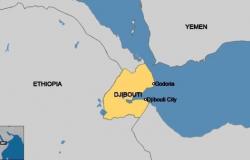We show you our most important and recent visitors news details Design DNA of smart cities: Humanity, sustainability, commerciality and resilience in the following article
Hind Al Soulia - Riyadh - By Matthew Tribe
When you hear the word ‘smart’ you may initially associate it with being street smart or even book smart. But for many years it has been used as an adjective to describe our cities — smart cities. To understand the meaning of what is meant by the word smart in this context, we must first look at the factors that constitute ‘smartness’.
With buildings literally representing the fundamental blocks of any city, what is it that sets one concrete jungle apart from another? While the crux of a city is physical buildings and infrastructure, there are other building blocks to consider when creating a smart city in the truest sense of the word including humanity, sustainability, commerciality, and resiliency.
These four foundational pillars are critical in the midst of a global pandemic and an oil trade war that is creating landslide disruptions to the economy. Now more than ever, the ‘happiness’ of society has become essential, with regional governments taking action to sustain citizen-wellbeing and keep society at the heart of building strong and resilient communities.
Humanity: ‘happiness’ is not just a buzz word
Fundamentally, happiness remains at the core of all societies to provide a sense of belonging, community and wellbeing. In fact, happiness has become a new currency held in high regard by policy makers and entities, who actively seek to build happiness into the fabric of initiatives, which play an important role in the economic growth visions of the region’s governments.
By focusing our attention on the challenges humans face in their daily lives, coupled with the application of emerging urban technologies and life centred design, it is possible to deliver solutions that enhance the happiness and wellbeing for all. Spaces can provide stress relief, methods of interaction, levels of comfort, natural light, air quality and other elements that have the ability to influence people’s emotions and provide environments where individuals are more conducive to productivity.
Sustainability: design DNA
The impact of nature on general wellbeing inspires feelings that not only connect us to each other but also to our environment. In recent years, there has been significant momentum geared towards creating sustainable and resilient developments that aim to improve the quality of air, increase contribution of clean energy, and preserve natural resources, while fostering real economic growth and social development.
The focus has shifted to deploying scalable, smart solutions to create cities that contribute to the sustainability agenda and towards sustainable urbanisation as we build smart, accessible, resilient and vibrant cities of the future.
Planning, designing and developing smart cities paves the way for architects and developers to build infrastructure that contributes to a more sustainable and productive environment. Rather than contributing to carbon emissions, smart infrastructure empowers citizens, providing resourceful solutions to everyday problems.
Commerciality: economic viability
Cities are the most important economic centers of the world. State-of-the-art infrastructure drives more effective and data driven decisions that open up a wealth of economic development opportunities right from greater transportation links and better public facilities through to more engagement between citizens and government entities.
The make-up of a community is integral to city performance and its ability to support the livelihoods of those within it. The reward being a greater quality of life for citizens, which also has economic benefits in itself – happier citizens care more about their city and work to further improve and develop it.
Resiliency: proofing for the future
Building resilience is an expanding theme in today’s world. The need for continued social distancing and increased health and safety measures caused by the COVID-19 pandemic is set to have significant implications for real estate, both for existing buildings and how they will be designed in the future.
Resilience is made up of many factors including governance, risk assessment, knowledge and education, risk management and vulnerability reduction, and disaster preparedness and response. In the context of smart cities, technology, data and policymaking have significant roles to play in helping them to absorb future growth and soften the blow of any unexpected setbacks that may come their way.
The four foundational pillars of a smart city
To exponentially achieve better-performing cities and stronger, more cohesive communities, these four key fundamentals are imperative. Delivering on each of these requires collaboration, cooperation and active participation from all — from designers and developers, to authorities and citizens – we all have an important role to play.
Complying with these will provide greater opportunities for wellbeing amongst residents as it embraces regenerative construction processes that create sustainable, smart developments that respond to demographic, social and environmental needs.
As creative agents for change, we must continue to look at citizen behaviours first to set up the proper planning and design framework that responds to the long-term needs of a community. It is essential that we understand the implications of what we do and the responsibility that goes with it, to ensure that we deliver contextually relevant and environmentally tuned planning and design solutions for the world’s smart economic centres.
— The writer is executive director at CallisonRTKL
These were the details of the news Design DNA of smart cities: Humanity, sustainability, commerciality and resilience for this day. We hope that we have succeeded by giving you the full details and information. To follow all our news, you can subscribe to the alerts system or to one of our different systems to provide you with all that is new.
It is also worth noting that the original news has been published and is available at Saudi Gazette and the editorial team at AlKhaleej Today has confirmed it and it has been modified, and it may have been completely transferred or quoted from it and you can read and follow this news from its main source.





